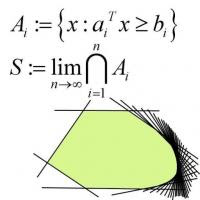The post-World War II era was one where the USA had ascended to economic dominance with the decline of the Sterling Pound and the US Dollar's replacing it as the world's de facto reserve currency. As the reserve currency, trades were done in US dollars, hence it made sense to hold US Dollars and to hold US Dollar denominated debt. This made sense because of the reputation of the US Government of paying its debts (c.f. post-Independence deliberations on British debt) and the strength of its economy.
Fast forward to today, where the USA has taken on a tremendous amount of debt to finance infrastructure, war, pork, etc, and has apparently no politically likely way to turn a budget surplus. So the debt accumulates.
Now, the US Dollar used to be pegged to gold until this convertibility was cancelled by Nixon in 1971. The Federal Reserve long had the liberty to print money, but only with the dropping of the gold standard was it truly free to let the presses run with furious abandon.
The expansion of the money supply decreases the value of each dollar. So the fixed sum that is owed by the US Government to each lender decreases in real terms as the money supply increases. Furthermore, the Federal Reserve accumulates more dollars with which it can do things like pay interest on the national debt.
It's all very sneaky.
Back to Singapore. Currently inflation is at around 5%, so CPF rates of return of 2.5% represent a 2.5% year on year decline in the real value of CPF savings. The 2003 HBS Study "Singapore Inc." assessed CPF as a financial instrument that would be able to fuel government spending. This is very likely to be the case. I'm unsure what the Singapore Government's capital ratio is, but I'm very certain it is not 1. From this perspective, the Singapore Government borrows income and pays 2.5% interest on it. This is a great deal as assets can be acquired at today's value and repaid in lower real terms in future.
The next question is, is it intended? If so, it is a sneaky form of taxing both employees and employers simultaneously. (Just that employees get something out of that grift, and don't mind.) Then again, all employers calculate the CPF contribution as well as the tax rate, making it unlikely that it is a deliberate con. If it is a deliberate con, I will never see my money again. But if it isn't, I need my CPF interest to be at least on par with inflation. Again, if it is a con, it is very much in line with pushing back the retirement age (more inflating).
Whatever it is, I want my money back.




No comments:
Post a Comment